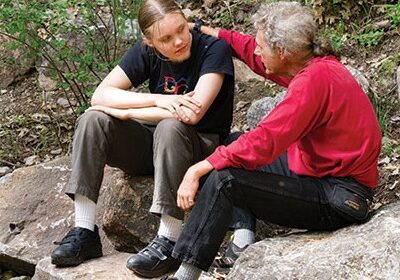“Money doesn’t grow on trees.”
“Another day, another dollar.”
“You get what you pay for.”
“Money makes the world go ‘round.”
These common sayings can be confusing for children. It’s important to teach our children the value of money, how to save, spend wisely and practice financial responsibility. Simply saying “We have to pinch our pennies” or “That costs an arm and a leg” is not going to help them truly understand these complicated concepts. Here are some simple but important lessons to teach kids of any age about money.

Teach children how to earn money
The concept of earning money can be difficult for children to understand. You can start teaching your child about how money is earned by paying them for assigned chores. Some families may find that giving an allowance helps children understand the concept of earning a “paycheck” or allowance while other families may assign a dollar amount for specific chores. Either way, you are showing your child that money is earned. “My kids have been getting an allowance since they were four years old.” said Sarah Brandt, mom of three. “I rarely buy extras, like toys and treats. All of that comes from their allowance. They budget and save better than I do.”
Teach kids how to budget their money
“Starting in first grade, we give half their age per week for allowance and allocate 10% for giving, 10% to save and 80% to use as they wish,” says Joy Alsup, mom of four. “This frees me to say no to little things like candy or going places with friends because they can use their own money. They have a choice and can ‘suffer’ going without if they have spent it all.” Alsup says that after they start their first job, they save 50% of each paycheck to give them a good start for spending money in college.
Candice Zimmers, mom of three does something similar. “Any money that our children earn or receive is divided into 4 categories. Tithe 10%, family tax 10%, any amount they choose for savings and the rest is money to spend or donate. We feel this gives them a sense of how to allocate their funds.” Every family will have different categories for saving and spending money. The main goal is to help your child understand how to budget and save while giving them choices of how they spend their money. If they make a poor choice to spend all they have earned, they are forced to face the consequences. This lesson is best learned when the stakes are lower, at a young age, than as an adult when the consequences can be life-altering.
Help children develop a realistic view of how much things cost
It is hard for children to understand the value of money when they don’t have a realistic understanding of how much things cost. While running errands with your child, show them how much it costs to fill the car with gas, the price of groceries and how to compare prices while shopping. Give your child $20 in cash and ask them to purchase the family lunch at the grocery store. This is a simple lesson that helps them understand the cost of living. “I put the children in charge of the family eating out money,” said Brandt. “You want to eat at McDonald’s tonight? Cool, but that means no pizza this weekend.” These comparisons and trade-offs give your child valuable lessons in the value of the dollar.
Teach children to understanding banking
Investing, saving and how banking works are important lessons for children to learn. Have your preschool age children place money in a glass jar. This gives them a visual of the money they are earning and they can watch it grow. Older children may benefit from opening a bank account. “I opened a checking and savings account for my 11-year-old,” says Michelle Lyons, mom of three. “I asked the bank for a check register so she can learn how to balance her account. I also got her a stack of deposit slips to learn how to make a deposit. I explained to her the importance of not telling people her pin, how to shut off her card if it is misplaced and the importance of saving.”
Warn your kids about the dangers of credit card debt. The credit limit on some cards is often far higher than a young adult can handle and the ease of swiping a card to pay for items they want or need is tempting. Interest rates are high and the debt can quickly stack up. Talk with your teens and young adults about credit cards before they make mistakes that can cause problems long term.
Be a good banking and budgeting example
The best way you can teach your child about money is to lead by example, give them real life experiences and allow them to start making decisions on their own at a young age. If you are a spender and buy items on impulse, they may develop these bad habits as well. If you are a saver and keep a careful budget, your kids will likely develop these healthy habits. If you and your partner often fight about money, this could cause your child to view money discussions in a negative context. Try to remain positive and help them understand that money is an important topic to discuss and learning about money can help develop security and independence in the future.
Posted in: Frugal Families, Youth & Teen
Comment Policy: All viewpoints are welcome, but comments should remain relevant. Personal attacks, profanity, and aggressive behavior are not allowed. No spam, advertising, or promoting of products/services. Please, only use your real name and limit the amount of links submitted in your comment.
You Might Also Like...

Staying Calm In The Face Of Rudeness
With open enthusiasm, a mom picks up her middle-school-age son and friends after soccer practice, offering them bagels as they pile into the car. “Nobody likes whole wheat” is all […]

Positive Peer Pressure: How Friends Build Happiness
We often hear about the many negative aspects of peer pressure and worry that our children’s friends could push them down a path of troubling behavior like bullying or drug […]

Experiencing Trauma: How to Talk to Your Teen About Violence and Trauma
In the United States, four out of ten adolescents have directly witnessed violence, 17 percent have been physically assaulted, and eight percent have experienced sexual assault. These rates are even […]

North State Teens Making a Difference in Their Communities
Studies have shown that teens who volunteer and do community service gain a sense of responsibility, learn empathy for others, and have increased self-esteem. It’s a chance to explore interests […]




